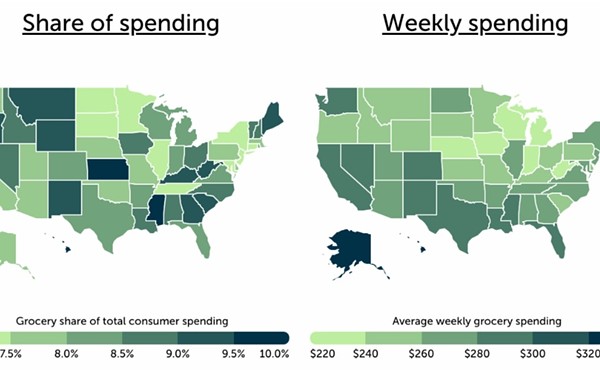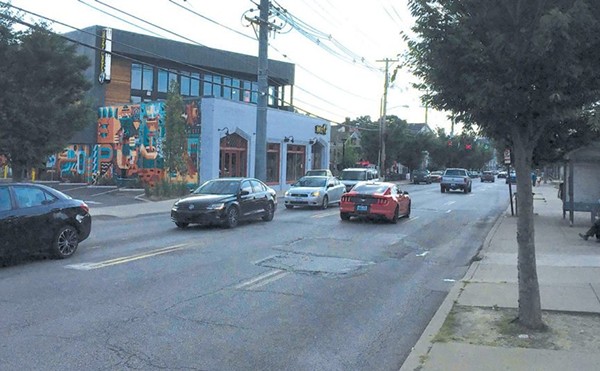The sound of a clock radio alarm opens the piece by Kristin Espeland on WFPL-FM. She takes the listener through her morning routine, chronicling her own consumption of energy. Espeland records flipping light switches, brushing her teeth and her bicycle ride to work. It makes for an affecting piece, several minutes long. If you listened, you’re likely to have paused and thought, if just for a second, about the environment and your own energy consumption.
That is the sort of reporting Donovan Reynolds had in mind when he came to Louisville last year to take the reigns of the Public Radio Partnership. He hired Espeland to start an environmental reporting initiative in October, and this month he brought on board former LEO Arts and Special Projects Editor Elizabeth Kramer, to head a similar effort to cover arts and humanities as a regional focus. Both have strong radio journalism credentials, with ties to the Columbia School of Journalism. Reynolds found Kramer just across Fourth Street, and hired Espeland from Wyoming Public Radio.
If it sounds odd to be hiring reporters on such specific and seemingly narrow topics, it’s because the concept of covering a beat, any beat, is a long-lost idea in radio. It’s a luxury that’s yielded to scores of “general assignment” reporters, both in radio and TV.
Long gone are the days when radio reporters were encouraged to produce long-form reports for commercial radio stations such as WHAS-AM. That once-great station last earned a Peabody Award nearly a decade ago, but its staff is now stretched thin covering newscasts for stations across the state. In-depth is no longer a staple in commercial radio reporting.
But hiring full-time reporters to focus solely on the environment? The arts? Seems wacky. Until you talk with Reynolds, that is; he is a journalist at heart, and he’s been down this road before. A dozen years ago in Michigan, Reynolds helped start what is now the Great Lakes Radio Consortium, which today airs programming on 140 public radio stations in 20 states and has a trophy case filled with journalism awards. It receives financial support from several Foundations and corporations.
He believes it can happen here.
“WFPL has room to grow,” Reynolds said. “We wanted to beef up our news. The environment was a no-brainer. Pollution doesn’t stop at the county line, and we hope to get support for the initiative regionally.”
Espeland thinks there are plenty of environmental topics to cover. She has already traveled to Eastern Kentucky to explore the complex issues around surface mining. She’s examined air quality in Louisville and says she’s interested in reporting on “garbage.” Those stories help promote the regional approach to reporting, and they’re likely to air on public stations throughout the region.
Kramer, likewise, wants to expand public radio coverage of the arts beyond Louisville. She has three pages of story ideas, and she’ll get the time to work on them.
Of course, the new hires showcase the difference between commercial and public programming. Financial support for a commercial station is tied directly to advertising sales, while public radio pitches its programming to Foundations in hopes of landing grants and sponsorships. (Some observers are uncomfortable with that arrangement, as well, but that is another column.)
Reynolds is in the process of hiring a grant writer and a majority gifts officer in hopes of going after more corporate funding. He fully expects the corporate community to embrace and support the new programming initiatives. He’s confident, he says, because the economics work. Brown-Forman, for example, just sponsored a local appearance of the national show “Whad’ya Know?,” which broadcast live from the Brown Theatre. There’s a new programming fund so individuals can donate specifically to local programming.
Among Reynolds’ first actions in Louisville was the radical concept of reducing the length of the spring and fall pledge drives. He thought it would make more money. The just-completed Fall Membership drive raised a record $302,385 in seven days. Efforts are under way to modernize the station’s Web sites, with more podcast options and better archiving of local content.
An Arbitron survey conducted in 2005 showed that public radio audiences reflect the sort of strong demographics that corporations like Brown-Forman desire — 70 percent are college graduates, and nearly half earn $75,000 or more. Corporate support is growing.
It’s more than refreshing to know that a local media organization is expanding its reporting staff, and even better that it might be economically feasible.
Rick Redding writes frequently about news and media on his blog,
http://thevillevoice.com





